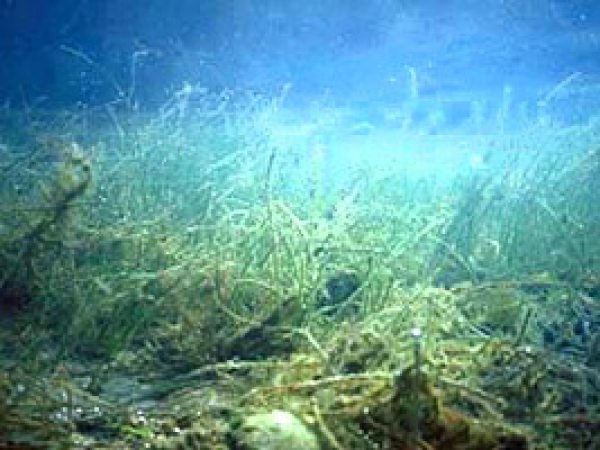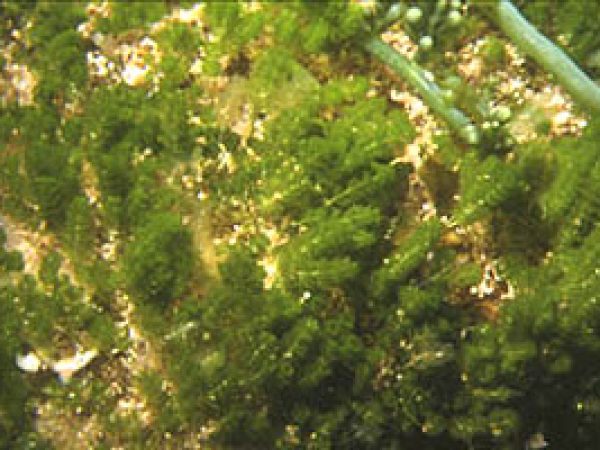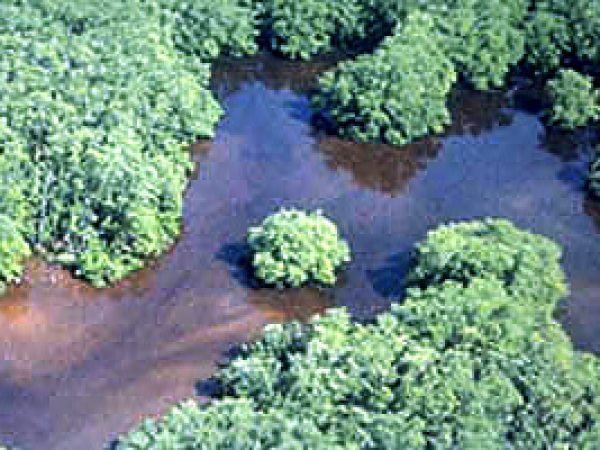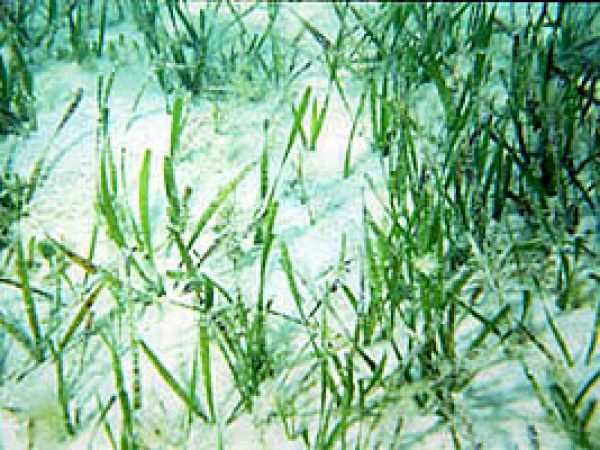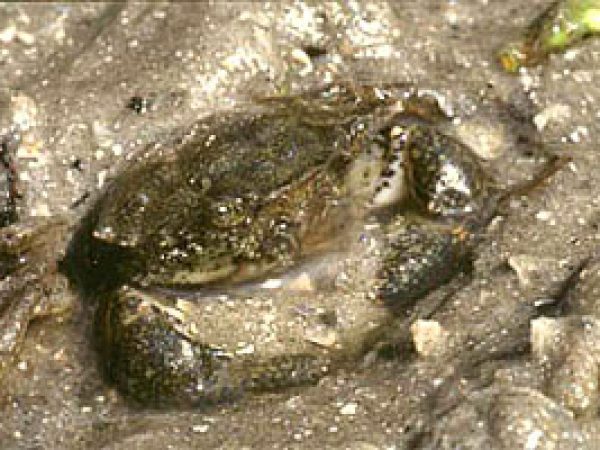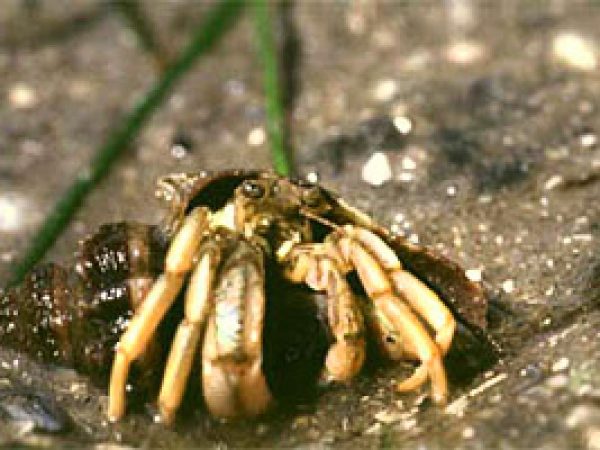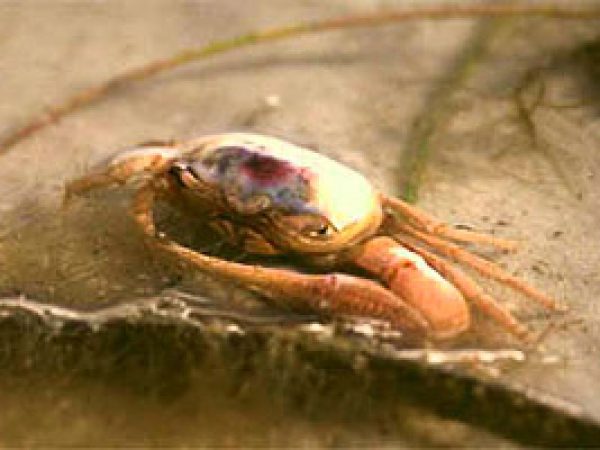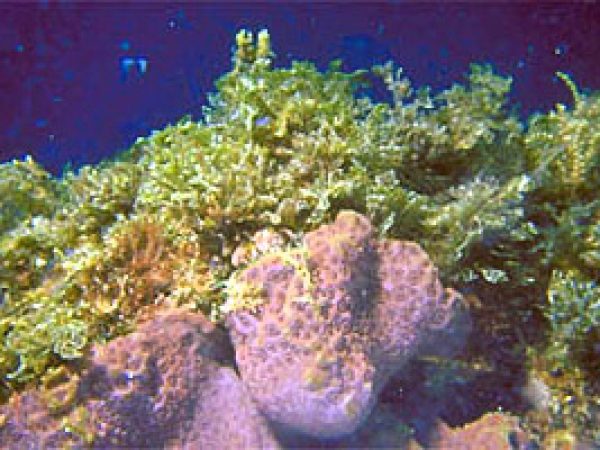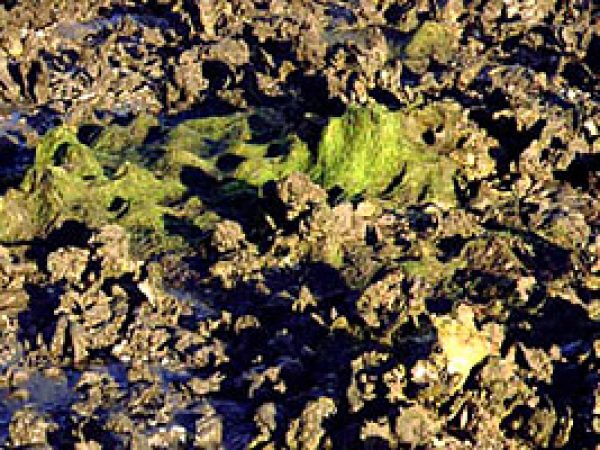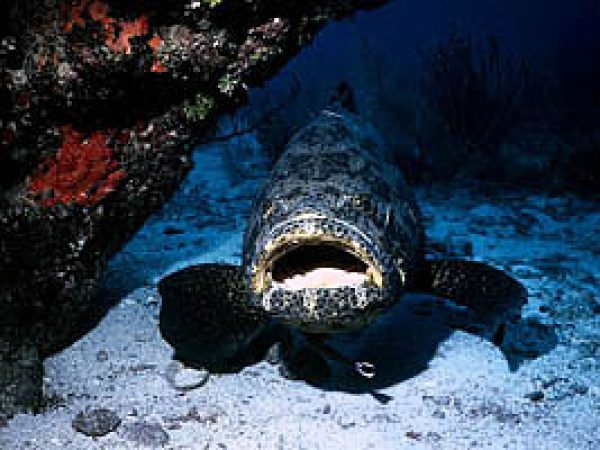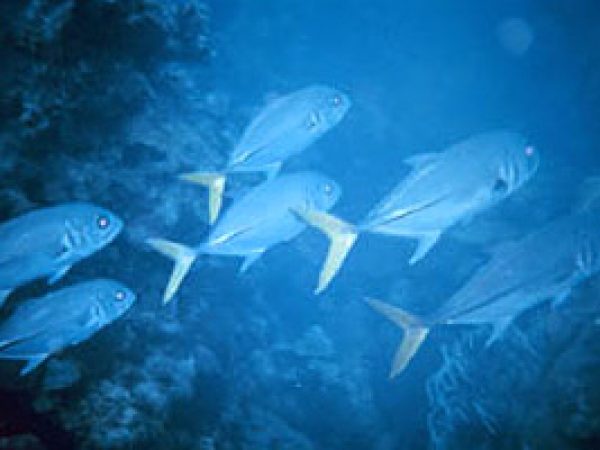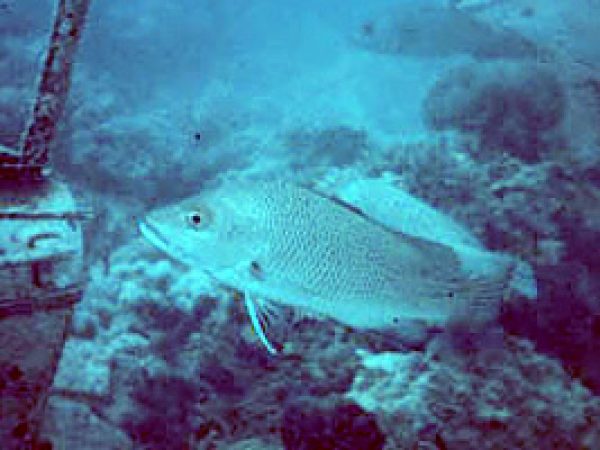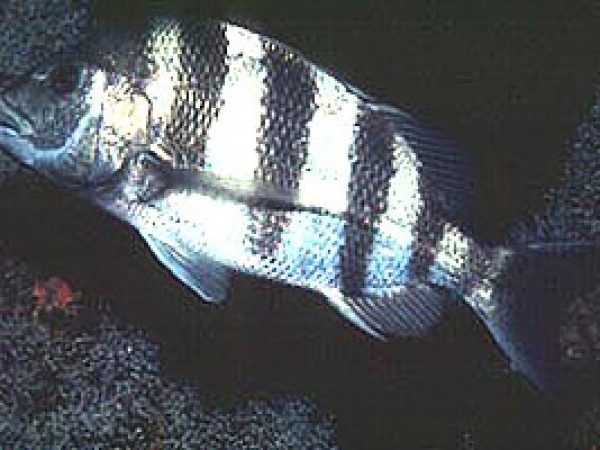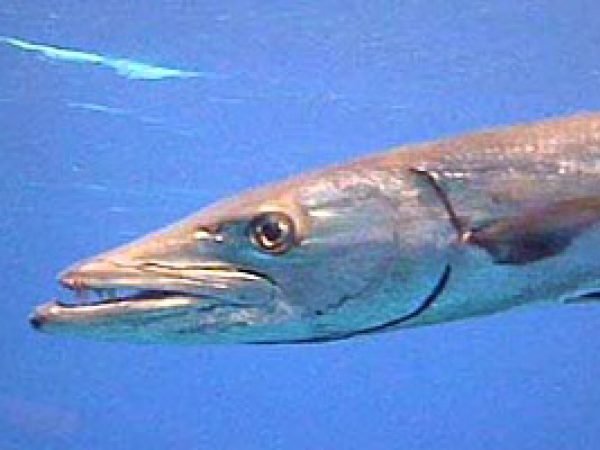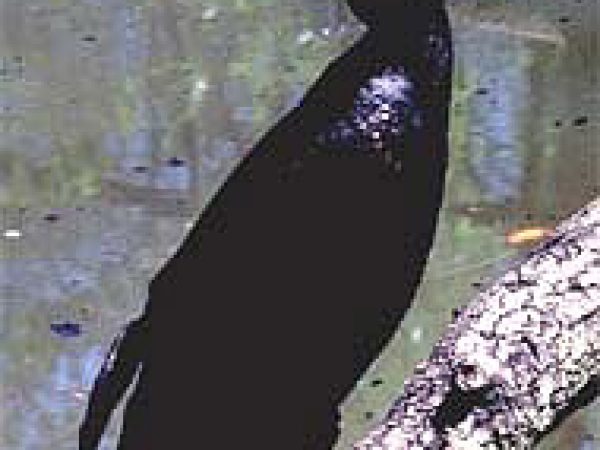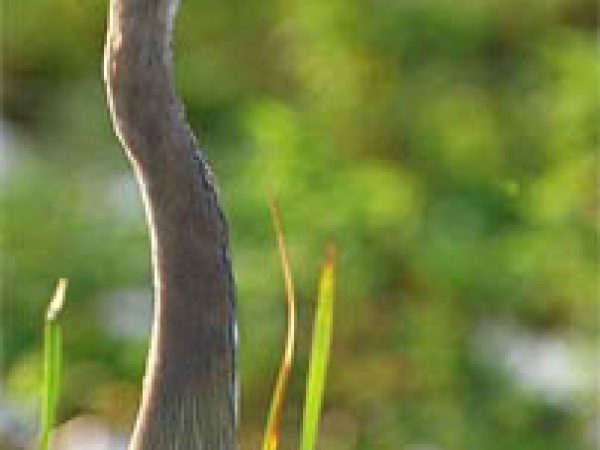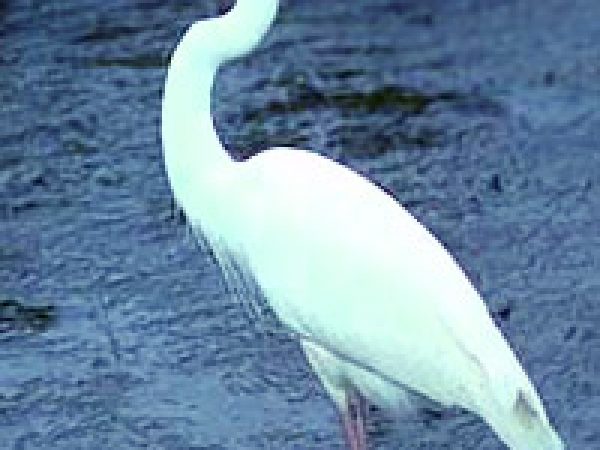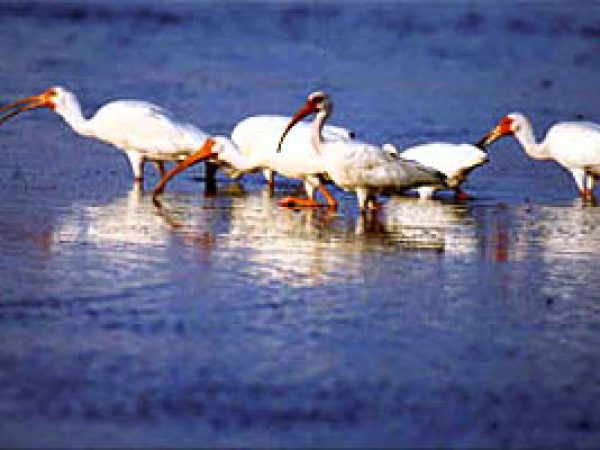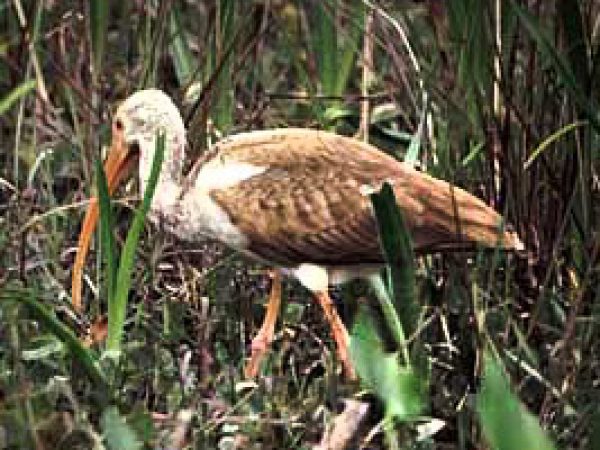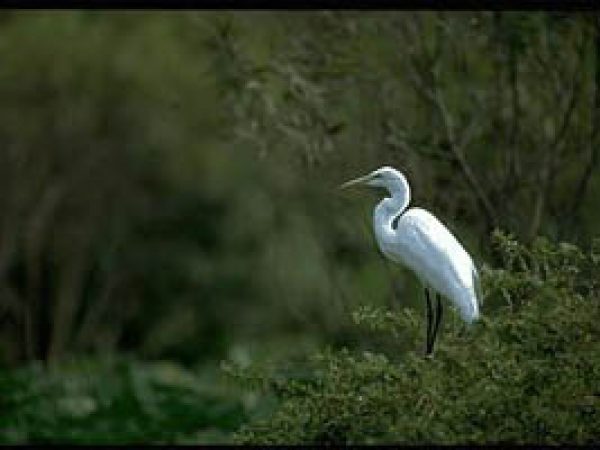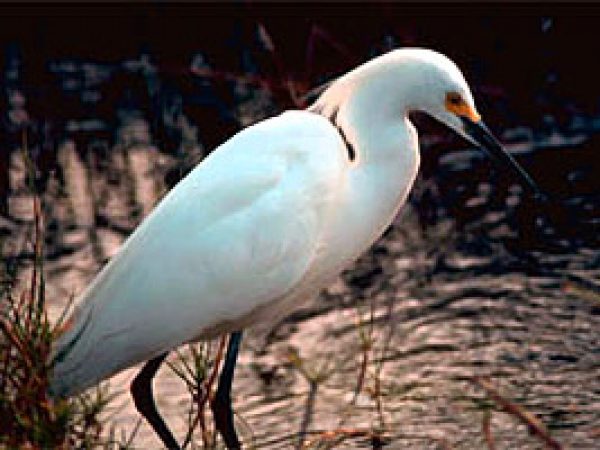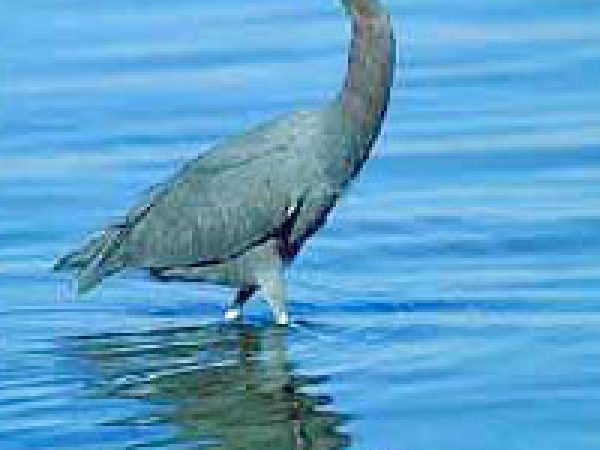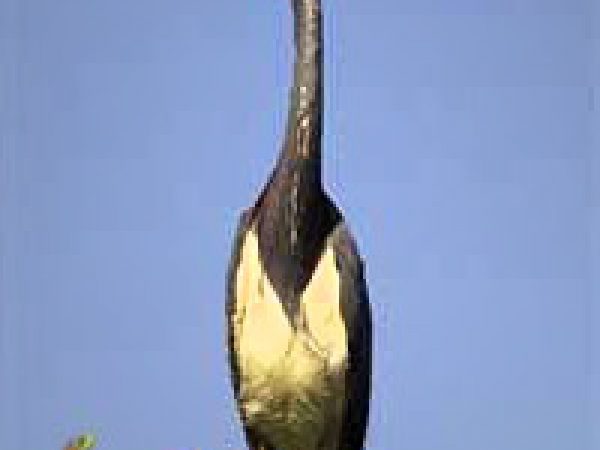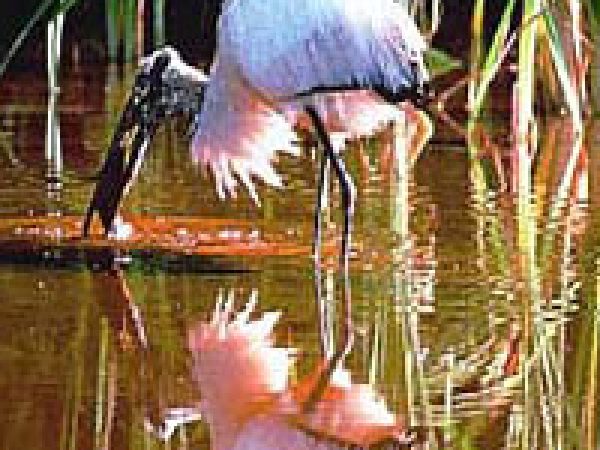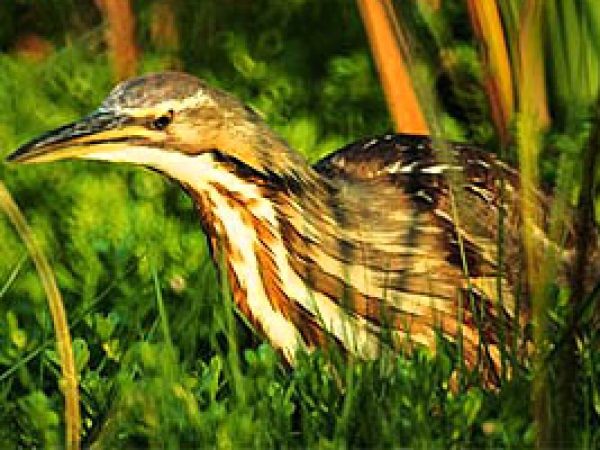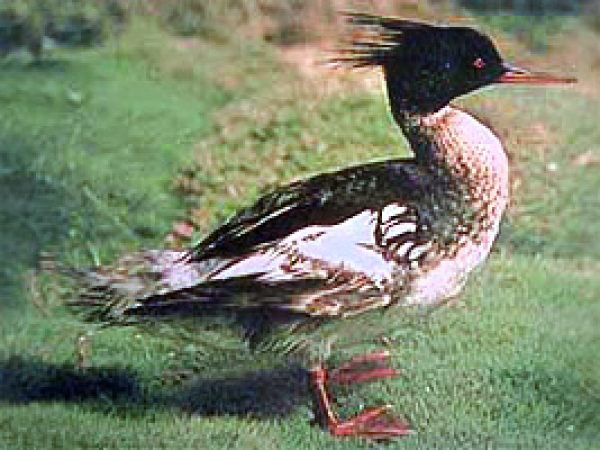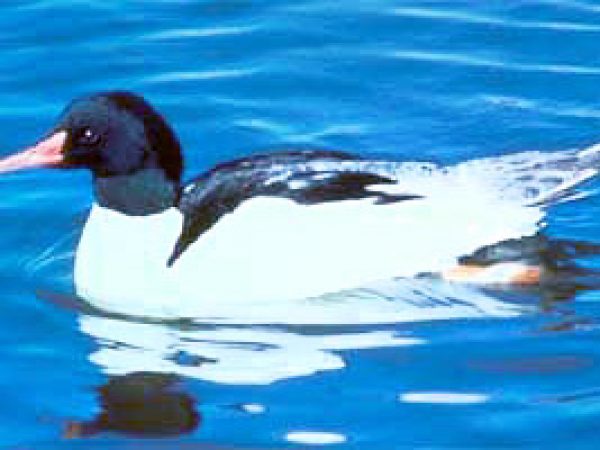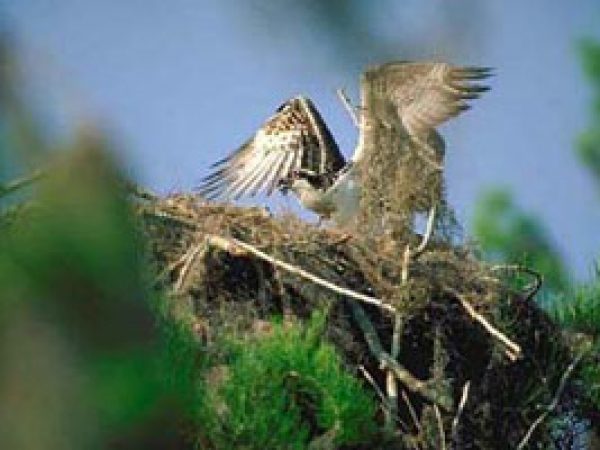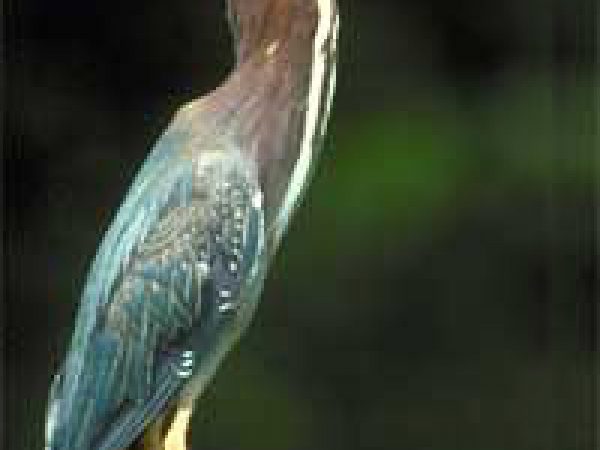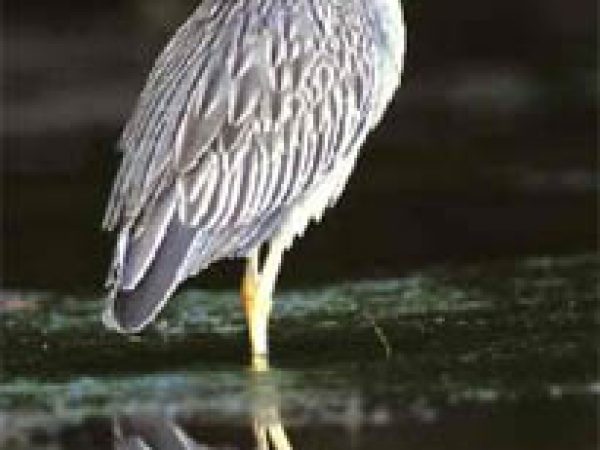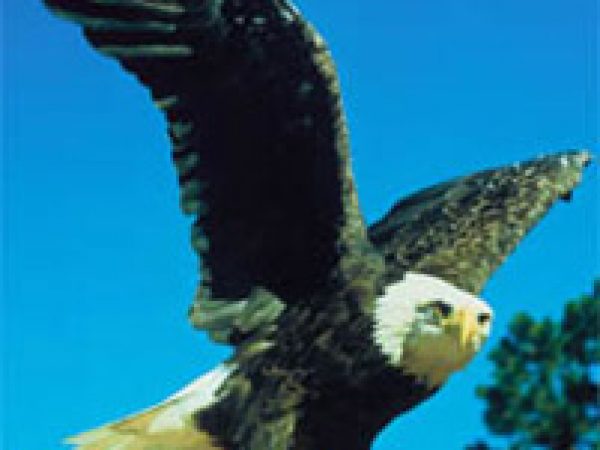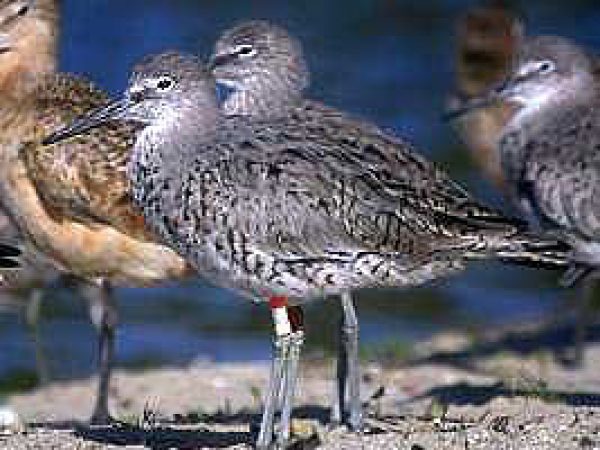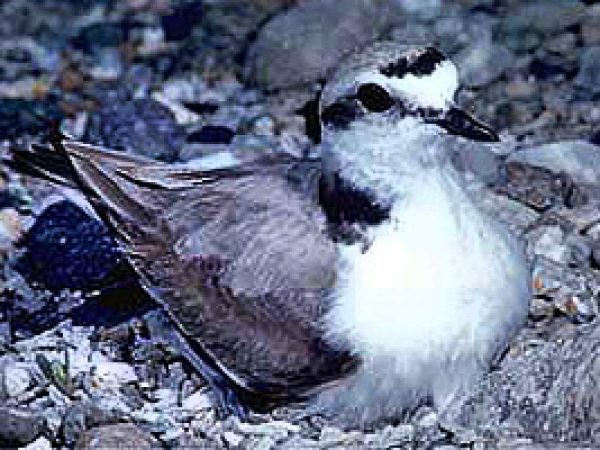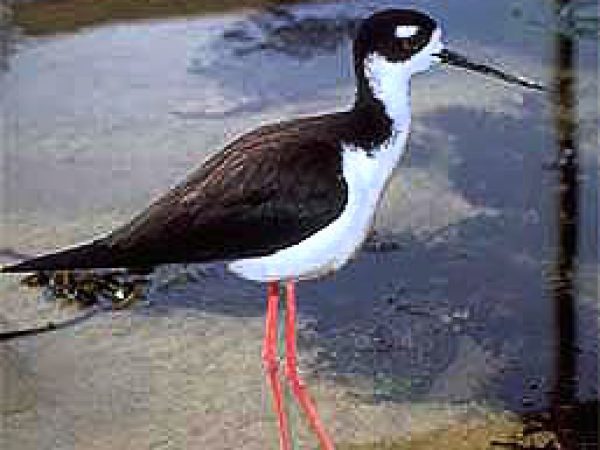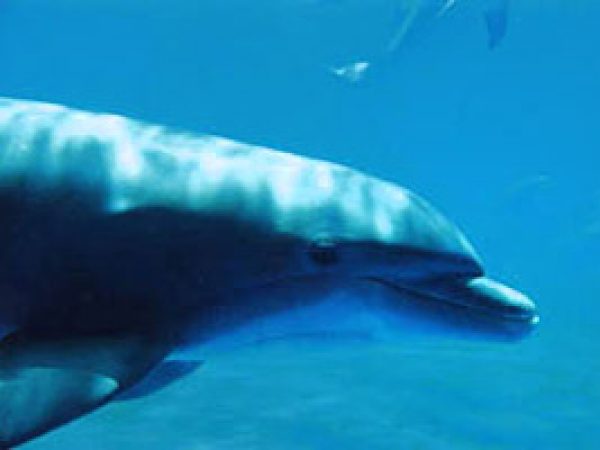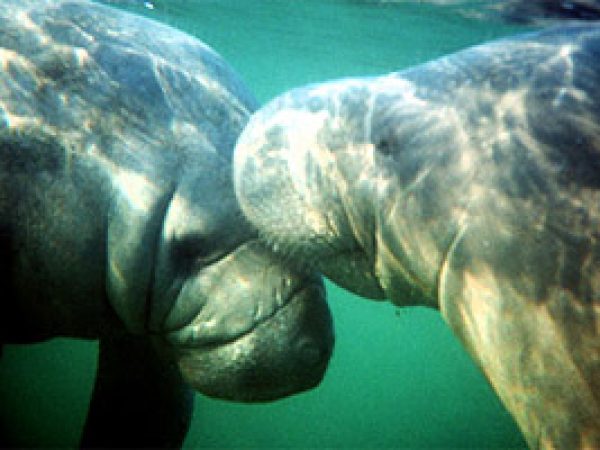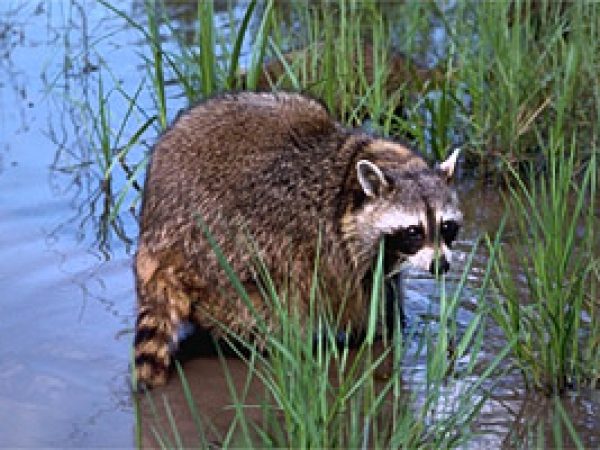Native Flora
Flora changes from macroalgae in fresh and brackish waters to seagrass and mangroves as salinity increases.
 Shoal grass. Photo courtesy South Florida Water Management District
Shoal grass. Photo courtesy South Florida Water Management District Caulerpa verticillata. Photo © John Huisman
Caulerpa verticillata. Photo © John Huisman Mangroves in Florida Bay Estuary. Photo courtesy South Florida Water Management District
Mangroves in Florida Bay Estuary. Photo courtesy South Florida Water Management District Turtle grass. Photo courtesy South Florida Water Management District
Turtle grass. Photo courtesy South Florida Water Management District
The freshwater habitats of the Everglades are dominated by marsh and slough flora, however the flora changes moving downstream where the freshwater mixes with seawater. Transitional macroalgae species including Chara hornemanni and Batophora oerstedi are common, preferring salinities from 0-10 parts per thousand (ppt).
Widgeon grass (Ruppia maritima) also prefers waters of low salinities. As salinities increase, Acetabularia crenulata, Caulerpa verticillata, and Udotea wilsoni become the dominant macroalgae along with shoal grass replacing widgeon grass. Mangrove forests and islands are also common along the shoreline and just offshore in estuarine waters.
Past the intertidal zone, turtle grass (Thalassia testudinum) becomes the dominant seagrass, forming extensive meadows that provide habitat and shelter for a diversity of marine organisms.
Native Fauna
Invertebrates
Commercially important species including shrimp and lobsters reside inhabit estuarine waters.
 Stone crab. Photo courtesy South Florida Water Management District
Stone crab. Photo courtesy South Florida Water Management District Hermit crab. Photo courtesy South Florida Water Management District
Hermit crab. Photo courtesy South Florida Water Management District Fiddler crab. Photo courtesy South Florida Water Management District
Fiddler crab. Photo courtesy South Florida Water Management District Hardbottom reef. Photo courtesy South Florida Water Management District
Hardbottom reef. Photo courtesy South Florida Water Management District Oyster bed. Photo courtesy South Florida Water Management District
Oyster bed. Photo courtesy South Florida Water Management District
Extensive seagrass meadows within Florida Bay serve as important habitat for a variety of species including invertebrates such as the pink shrimp (Penaeus duorarum) and spiny lobster (Panulirus argus).
Hermit crabs (Pagurus spp.) and stone crabs (Menippe mercenaria) also live within the seagrass flats while fiddler crabs (Uca spp.), isopods, and barnacles (Balanus balanoides) reside in the intertidal zones.
Within Florida Bay, there are limited areas of hardbottom reef. These communities generally have low diversity and are dominated by octocorals, algae, sponges, and a few stony coral species. Hardbottom habitats provide important cover and feeding areas for many fish and invertebrates.
Fish
Shallow waters of Florida Bay offer protection to juvenile fish from open water predators.
Many commercially and recreationally important fish reside in Florida Bay during at least part of their life history, migrating offshore to spawn. The fertilized eggs develop into larvae and are transported to estuaries and bays by currents and tides. The seagrasses, mangroves, and shallow waters offer protection from open water predators. Gamefish that are commonly found in the marine and estuarine waters of the Everglades include both tropical and temperate species.
Common game fish:
 Goliath Grouper (Epinephelus itajara). Photo © Don DeMaria
Goliath Grouper (Epinephelus itajara). Photo © Don DeMaria Crevalle jack. Photo courtesy NOAA
Crevalle jack. Photo courtesy NOAA Gray snapper. Photo courtesy NOAA
Gray snapper. Photo courtesy NOAA Sheepshead. Photo © David Snyder
Sheepshead. Photo © David Snyder Great barracuda. Photo © Bob Klemow
Great barracuda. Photo © Bob Klemow
Birds
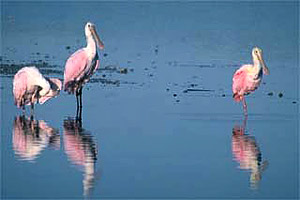
Estuarine and marine habitats provide habitat and nesting areas for many birds.
This habitat is home to wading and probing shorebirds, oceanic birds, and diving birds. The roseate spoonbill (Ajaia ajaja), reddish egret (Egretta refescens), double-crested cormorant (Phalacrocorax auritus), and black-crowned night heron (Botaurus lentiginosus) are all known to nest within the habitats surrounding Florida Bay.
Other birds commonly observed include:
 Double-crested cormorant (Phalacrocorax auritus). Photo courtesy U.S. Geological Survey
Double-crested cormorant (Phalacrocorax auritus). Photo courtesy U.S. Geological Survey Great blue heron (Ardea herodias). Photo courtesy South Florida Water Management District
Great blue heron (Ardea herodias). Photo courtesy South Florida Water Management District Great white heron (Ardea herodias). Photo courtesy Peter Osenton/U.S. Geological Survey
Great white heron (Ardea herodias). Photo courtesy Peter Osenton/U.S. Geological Survey White ibis (Eudocimus albus). Photo courtesy U.S. Fish and Wildlife Service
White ibis (Eudocimus albus). Photo courtesy U.S. Fish and Wildlife Service Glossy ibis (Plegadis falcinellus). Photo courtesy U.S. Geological Survey
Glossy ibis (Plegadis falcinellus). Photo courtesy U.S. Geological Survey Great egret (Casmerodius albus). Photo courtesy South Florida Water Management District
Great egret (Casmerodius albus). Photo courtesy South Florida Water Management District Snowy egret (Egretta thula). Photo courtesy U.S. Fish and Wildlife Service
Snowy egret (Egretta thula). Photo courtesy U.S. Fish and Wildlife Service Little blue heron (Egretta caerulae). Photo courtesy South Florida Water Management District
Little blue heron (Egretta caerulae). Photo courtesy South Florida Water Management District Tri-colored heron (Egretta tricolor). Photo courtesy South Florida Water Management District
Tri-colored heron (Egretta tricolor). Photo courtesy South Florida Water Management District Wood stork (Mycteria americana). Photo courtesy U.S. Geological Survey
Wood stork (Mycteria americana). Photo courtesy U.S. Geological Survey American bittern (Botaurus lentiginosus). Photo courtesy South Florida Water Management District
American bittern (Botaurus lentiginosus). Photo courtesy South Florida Water Management District Red-breasted merganser (Mergus serrator). Photo courtesy U.S. Geological Survey
Red-breasted merganser (Mergus serrator). Photo courtesy U.S. Geological Survey Common merganser (Mergus merganser). Photo courtesy U.S. Geological Survey
Common merganser (Mergus merganser). Photo courtesy U.S. Geological Survey Osprey(Pandion haliaetus). Photo courtesy NOAA
Osprey(Pandion haliaetus). Photo courtesy NOAA Green-backed heron (Butorides striatus). Photo courtesy U.S. Geological Survey
Green-backed heron (Butorides striatus). Photo courtesy U.S. Geological Survey Yellow-crowned night heron (Nyctasnassa violacea). Photo courtesy South Florida Water Management District
Yellow-crowned night heron (Nyctasnassa violacea). Photo courtesy South Florida Water Management District Southern bald eagle (Haliaeetus leucocephalus leucocephalus). Photo courtesy U.S. Fish and Wildlife Service
Southern bald eagle (Haliaeetus leucocephalus leucocephalus). Photo courtesy U.S. Fish and Wildlife Service Willet (Catoptrophorus semipalmatus). Photo courtesy U.S. Geological Survey
Willet (Catoptrophorus semipalmatus). Photo courtesy U.S. Geological Survey Snowy plover (Charadrius alexandrinus). Photo © Marguerite Gregory, California Academy of Sciences
Snowy plover (Charadrius alexandrinus). Photo © Marguerite Gregory, California Academy of Sciences Black-necked stilt (Himantopus mexicanus). Photo © Gerald and Buff Corsi, California Academy of Sciences
Black-necked stilt (Himantopus mexicanus). Photo © Gerald and Buff Corsi, California Academy of Sciences
Shoreline birds include the willet (Catoptrophorus semipalmatus), snowy plover (Charadrius alexandrinus), Wilson’s plover (Charadrius wilsonia), and the black-necked stilt (Himantopus mexicanus).
Mammals
Dolphins and manatees reside in the waters of Florida Bay.
Bottlenose dolphins (Turiops truncatus) and the West Indian manatee (Trichechus manatus) are common in the waters of Florida Bay. Raccoons (Procyon lotor) and other small mammals search for food along the waters edge.
 Bottlenose dolphin (Turiops truncatus). Photo © Tobey Curtis
Bottlenose dolphin (Turiops truncatus). Photo © Tobey Curtis West Indian manatee (Trichechus manatus). Photo © Laurel Canty-Ehrlich, NOAA
West Indian manatee (Trichechus manatus). Photo © Laurel Canty-Ehrlich, NOAA Raccoon (Procyon lotor). Photo © Gerald and Buff Corsi, California Academy of Sciences
Raccoon (Procyon lotor). Photo © Gerald and Buff Corsi, California Academy of Sciences
Glossary terms on page:
- estuary: area where freshwater meets the sea, creating a salinity gradient from pure freshwater (0 ppt) to full-strength seawater (35 ppt).
- intertidal: the area also known as the littoral zone which is covered by water during high tide and exposed at low tide.
- diversity: refers to the variety of species within a given association, areas of high diversity are characterized by a great variety of species.
- octocoral: coral type that includes sea plumes, sea whips, gorgonians, and soft corals.
- substrate: the material upon or within an organism lives or grows, including soil, plants, animals and rocks.
- slough: swamp bog or marsh, especially one that is part of an inlet or backwater.
- larvae: immature form of an animal that undergoes metamorphosis prior to changing into the adult form.
- tropical: tropical zone lies between 23.5 degrees north and south of the equator, has small seasonal changes in temperature and large seasonal changes in precipitation.
- temperate: temperate zone lies between 30 and 60 degrees latitude, climate undergoes seasonal changes in temperature and moisture.
- salinity: concentration of total salts dissolved in water, usually measured in parts per thousand.
- endangered species: a species in danger of becoming extinct that is protected by the Endangered Species Act.
